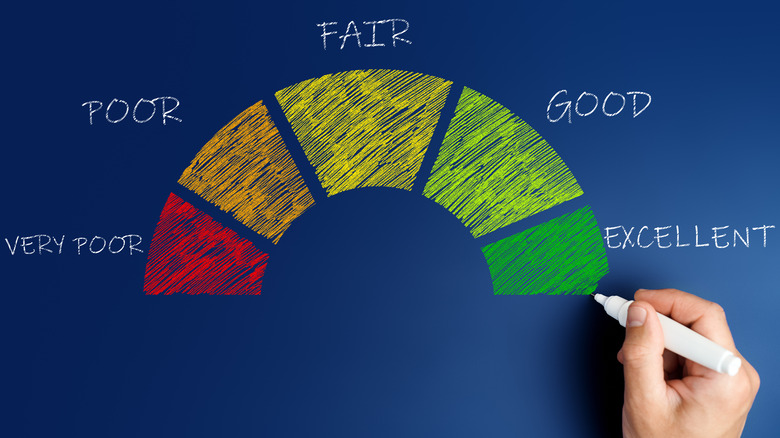What You Need To Know About Private Mortgage Insurance
Private Mortgage Insurance (PMI) is an insurance product that's bundled in with a mortgage loan for many borrowers. PMI protects a lender against the threat of default on a loan; and as a result, it can be swayed significantly based on a few factors that go into the origination of your particular mortgage loan.
Understanding what PMI is and how it works can help you make a smarter decision about your own borrowing strategy and needs when considering purchasing a new home. Essentially, PMI payments are levied against your mortgage bill each month if your equity in the home is less than 20%, the U.S. Consumer Financial Protection Bureau explains. A few facets of your loan application can lower these payments and, of course, eliminate them if you put down a 20% down payment (or when you reach this threshold through regular repayments).
From your credit score to the down payment you contribute when initially purchasing the home, understanding the math on monthly mortgage payments and the addition that PMI brings to the equation is crucial to maintaining balance in your budget.
Your down payment dictates the presence or lack of PMI additions
In the past home-buying age, borrowers and buyers traditionally saved up for a down payment of 20%, Investopedia says. However, the 20% standard figure is no longer the rule but rather an exception. Rocket Mortgage reports that the average down payment in the United States is now 6%, less than half the typical equity value of years past.
While 20% may not be required to purchase a home, this threshold remains in effect as a barrier to added mortgage insurance payments. If you are able to put down 20% on a new home, you won't have to add PMI payments into your monthly mortgage costs, while anything lower will add this premium in. However, your lender can help you calculate the amount of added premiums to the monthly cost depending on how much you can contribute upfront (via Rocket Mortgage).
Put simply, a 15% down payment will result in lower PMI premiums than a 10% down payment. It's a good idea to familiarize yourself with the sliding scale that comes along with different contribution levels as you get closer to finalizing the lending terms. You may be able to afford a slightly higher down payment than is strictly necessary, resulting in overall savings for the long term in both your PMI contributions and the principal balance accruing interest.
Credit history plays a role in calculating the PMI premiums
In addition to the percentage of initial equity that you purchase alongside the leverage granted through a mortgage loan, a great credit score can help reduce the amount your pay in PMI additions, too (via Rocket Mortgage).
Mortgage insurance exists to help defray the potential costs to the lender that come along with a default on the debt. If you cannot pay your mortgage and the home is foreclosed on, the lender is likely to take a loss on the property, while you suffer as well by losing the home altogether. In an effort to reduce this risk for lenders, mortgage insurance is tacked on in the early stages when buyers experience less incentive to continue making payments on the property if they meet lean times.
While no one wants to default on their mortgage loan and lose their home, a loss when owning less than 20% of the property hurts a lot less than foreclosure on a property that the owner enjoys a majority stake in. In addition, the longer you pay your mortgage, the more financially invested you are in maintaining the asset.
With an excellent credit history, you represent a much smaller default risk, and lenders consider this factor when calculating PMI contributions. In addition, with a slightly enlarged down payment, great credit history can help you pay less in premiums, keeping more of your cash in your pocket.
PMI cancellation processes
Bankrate reports that PMI premiums amount to an annual cost of about 0.3% to 1.5% of your mortgage balance, and so canceling these payments can save you thousands of dollars each year over the remaining lifetime of your loan. In the early years, if you didn't put down 20%, there's no practical way to avoid these payments, but over time you can remove this added cost from your monthly mortgage bill, reducing the amount you pay for the remainder of your mortgage.
As a direct approach, once you've reached 20% equity in the home, you can write to your lender (or perhaps call the firm, if this is stipulated as an option in the loan terms) and ask for this premium to be dropped from your mortgage. Eligibility requirements are different for loans owned by Fannie Mae and Freddie Mac, depending on the approach you take, but the process is more or less the same with either mortgage backer (government-sponsored enterprises that guarantee mortgage stability, as Rocket Mortgage explains).
If your home has seen a spike in value through either home improvements you've engaged in or through natural appreciation, you'll need an appraisal on the property to complete this request. Otherwise, even if you don't request the elimination of PMI premiums, conventional loan terms automatically drop this addition once you've reached a 22% equity figure in the property.



